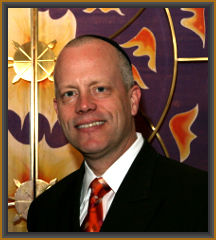
 |
May 26, 2023 (6 Sivan 5783) Parasha Shavuot
Dear Friends, I hope this correspondence finds you doing well and in good health. This has been an incredibly busy and productive time in our shul. Please join us this Friday and Saturday morning for in-person services at 10:15am. On Shabbat, the second day of Shavuoth, we will recite the Yizkor liturgy at approximately 11:00am. Both services will be available on our regular Zoom prayer link. Every year, the Fort Lee Volunteer Fire Department holds a Memorial Service at Fireman's Park to pay tribute to those who have passed away in the line of duty. This year's gathering will take place on Tuesday, May 30th at 6:00pm. I have been invited to give some remarks to pay honor to these fallen first-responders, so please join me and help to demonstrate our community’s support for the people who help to protect and take care of us. Thanks to those of you who joined us for the latest installment of Israel Update, last night. Our guest, Dr. Tuvia Book, gave us a fascinating overview of the situation in Gaza and what it is really like to be there. Our next adult education series begins on Monday, June 5th at 8:00pm and it is called Exclusion & Inclusion. This series promises to be equally fascinating and our first speaker will be Deborah Kolb, a published author, who grew up in a Hassidic community, but who left the fold. She now lives in a more modern Jewish environment and works as a fitness instructor and writer. Our second speaker, on June 12th will be Rafi Josselson, who is an actively engaged autistic Jewish teenager, who speaks to groups around the country regarding inclusion and neurodiversity. Like Pesach and Sukkoth, Shavuoth has a diverse liturgy with some curious customs. While both days of the holiday are like other festivals, by virtue of the fact that they include designated Torah readings and a full Hallel, each day also has unique literary traditions. Please allow me to explain. On the first day of Shavuoth, it is customary to read an ancient liturgical piyyut (poem) called Akdamut. This special hymn is recited responsively by the reader and congregation, each taking two verses, after the Torah scroll has been opened and the first person has been called to it. As an introduction to the Ten Commandments, it is an exaltation of God, His wonders in the world, Torah, and the reward waiting at the end of days for those who devote themselves to it. The first 44 verses are a double acrostic of the Hebrew/Aramaic alphabet (the first two verses start with Aleph, next two with Bet, etc.). The initial letters of the last 46 verses spell the author’s name and blessing, “Meir, the son of Rabbi Yitzkhak, may he grow in Torah and good deeds, Amen. Be strong and of good courage.” The syllable “ta” at the end of each line, representing the last and first letters of the Hebrew alphabet, signifies the endless cycle of Torah study. Tradition holds that Rabbi Meir, the 11th-century cantor of Worms, Germany, wrote the hymn of praise to God, Israel, and Torah in response to being forced to publicly debate the precepts of Judaism as opposed to those of Christianity. On the second day of Shavuoth, it is customary to read Megillat Ruth, or the Book of Ruth. The book is about a Moabite woman who, after her husband dies, follows her Israelite mother-in-law, Naomi, into the Jewish people with the famous words, “Whither you go, I will go, wherever you lodge, I will lodge, your people will be my people, and your God will be my God.” She asserts the right of the poor to glean the leftovers of the barley harvest, breaks the normal rules of behavior to confront her kinsman Boaz, is redeemed by him for marriage, and becomes the ancestor of King David. There are many explanations given for the reading of Megillat Ruth on Shavuot. The most quoted reason is that Ruth’s coming to Israel took place around the time of Shavuot, and her acceptance into the Jewish faith was analogous of the acceptance of the Jewish people of God’s Torah, hence the alternate holiday name, Zman Matan Torateinu. A second explanation relates to genealogy. Since the Book of Ruth ends with the genealogy of David, whose forbearer Ruth was, it has been suggested that it is read on Shavuot because there is a legend that King David died on Shavuot. A third reason for the reading of Ruth on Shavuot is that its story takes place at harvest time, and Shavuot also occurs at the time of the spring harvest, hence the other holiday name, Chag Hakatzir. As we complete the cycle of the counting of the Omer from Pesach to Shavuoth, I pray that you have been able to use this time to make every day in your life count for blessing. May the Shabbat and curious customs of Shavuot bring us all closer to Torah, community, and our faith traditions. Shabbat Shalom & Chag Sameach, Rabbi Eric L. Wasser, EdD, Hon.DM
|